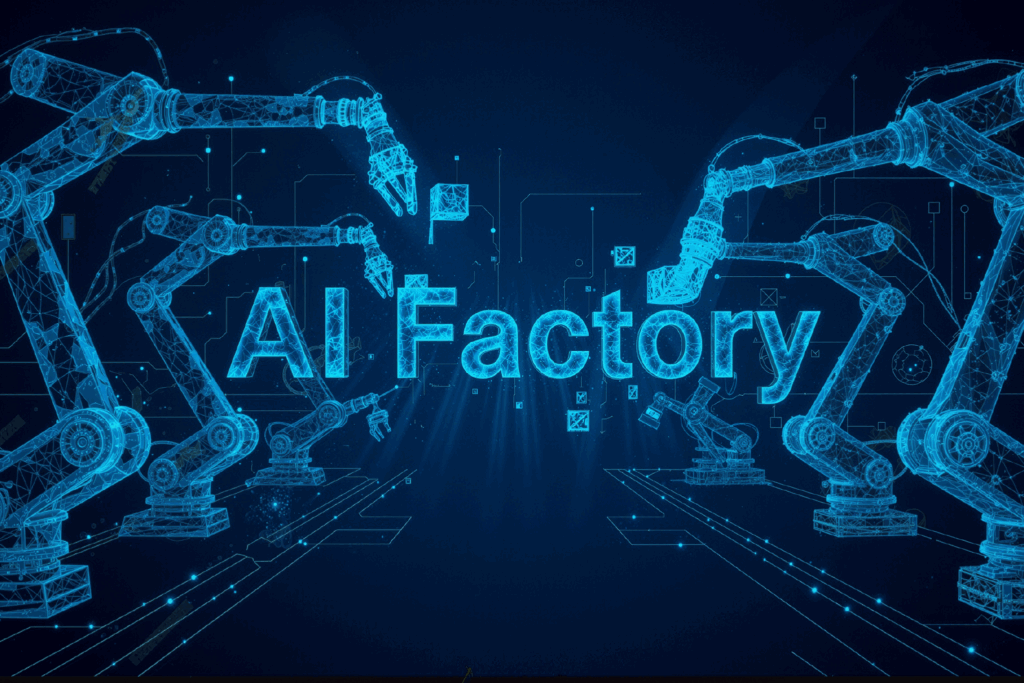1. Introduction
Everyone has had that hunch that something could go wrong, and sometimes, it does. But in the business world, relying on intuition can be costly, especially when the stakes are high and the variables invisible to the naked eye.
According to McKinsey , only 38% of companies use analytical models for critical risk decisions. This shows us that, in practice, most still bet, even if unwittingly, on hunches with unpredictable consequences. And in a scenario where data already exists, this isn't just a question of technology: it's a question of structure, culture, and, above all, automation .
Today, this change of course is both possible and necessary. Artificial intelligence (AI), especially through machine learning (ML), is transforming risk analysis into something more consistent, reliable, and actionable. Instead of relying on luck or individual experience , companies are now seeing patterns, predicting scenarios, and acting before impact.
In this article, we'll explore how AI is automating quantitative risk analysis and why this represents a game-changing shift in strategic decision-making.
Enjoy!
2. What is quantitative risk analysis and why does it matter?
Every business decision carries a level of risk. But when risks aren't accurately understood, the price of uncertainty can be high—in costs, time, and reputation . Quantitative risk analysis emerges precisely to transform assumptions into predictions. It measures financial impacts, calculates probabilities, and helps simulate real-world scenarios based on data.
In other words, it moves from a "blindside" assessment to an evidence-driven process . This allows companies to prioritize risks with the greatest potential for damage and adopt more efficient actions to mitigate them.
According to Accenture , only 33% of companies fully trust their data to make effective decisions and generate real value. This data reveals a significant gap: without structured and reliable data, quantitative analysis becomes limited, and automation is unfeasible.
Therefore, automating risk analysis with AI begins with understanding what risk is, how it can be measured, and, most importantly, how the right data can transform decisions.
2.1. Difference between qualitative and quantitative analysis
In risk management, both qualitative and quantitative analysis play a role. The difference lies in the depth and accuracy of the results.
Qualitative analysis is more subjective : it classifies risks based on perceptions, previous experiences, or generic categories such as "low," "medium," or "high." It helps create an initial overview and quickly identify areas of concern, but it doesn't offer numerical projections or impact calculations.
Quantitative analysis goes further, being more objective : it uses data, statistics, and mathematical models to estimate the probability of occurrence and the financial impact of each risk. With it, it's possible to simulate scenarios, predict potential losses, and inform decisions with much greater precision.
In short, if qualitative analysis answers "what could go wrong?", quantitative analysis answers "how much could it cost?" And it's this clarity that allows for strategic risk prioritization, especially when AI enters the scene, capable of automating this analysis with scale and speed.
But how does this automation work in practice? We'll look at that next.
3. How machine learning transforms risk analysis
For a long time, risk management was almost like predicting the weather by looking at the sky: based on experience, gut feeling , and a few basic tools. But with AI, and especially machine learning , this scenario has changed forever.
Now, we're talking about systems that not only analyze data at scale, but also learn from it, improve with each new input, and anticipate events with previously unimaginable accuracy.
More than just automating tasks, machine learning is transforming the way companies view, understand, and prioritize risk. This means moving from a reactive approach of simply chasing losses to a predictive, data-driven approach where risk is mapped before it even becomes a real problem.
See how this new perspective is already reshaping risk analysis in different sectors:
- Financial : Banks and fintechs are moving away from relying solely on static credit analysis to adopting dynamic models that learn from customer behavior in real time. This increases accuracy in credit granting and reduces default rates.
- Insurance companies : companies are incorporating AI into underwriting processes to assess risks more quickly and in-depth, cross-referencing multiple historical and behavioral data points—resulting in fairer, more agile decisions for the customer;
- Manufacturing : continuous reading of data, such as vibration and temperature, allows technical failures to be predicted in advance, anticipating maintenance and reducing downtime that previously seemed inevitable;
- Digital retail and e-commerce machine learning algorithms identify suspicious behavior patterns with high accuracy, protecting operations against fraud much faster and without compromising the customer experience;
- Logistics : Logistics operators have started using AI to predict bottlenecks, reroute loads, and optimize routes based on historical data, current conditions, and market trends.
These advances make it clear: transformation is no longer a future plan. It's already underway, often behind the scenes, shaping how risks are perceived and addressed. And the most interesting thing? We're only scratching the surface of what machine learning can do.
So, in the next section, we'll delve deeper, replacing "what could be" with "what is already being done."
4. What can already be automated with AI and ML today?
Until recently, risk automation sounded expensive, distant, and exclusive to large corporations. Today, with the evolution of AI models and the maturity of data, it's already part of the routine of various companies that understand the value of faster, more informed decisions.
Continuing our journey, at this point in the article, we'll focus on the critical functions of quantitative risk analysis that can already be automated with machine learning , regardless of the industry.
4.1. Loss and impact prediction
No company likes to be surprised by losses. And this is precisely where AI shines, anticipating the magnitude of the impact before it occurs machine learning models , it is now possible to automate financial risk projections, considering both historical data and real-time variables.
According to a recent study published in the International Journal of Academic Multidisciplinary Scientific Research (IJAMSR), companies that adopted this approach were able to equipment
availability by more than 50% This logic applies beyond industry : any area that deals with measurable risk can use AI to transform assumptions into concrete estimates, with a much smaller margin of error.
4.2. Identification of non-standard risks
Truly critical risks often emerge from the shadows, without providing clear signals. And that's when AI shines, identifying unusual behaviors that break conventional rules.
machine learning techniques for anomaly detection, systems can analyze massive volumes of data and pinpoint subtle deviations that indicate a potential threat—be it financial fraud, an operational failure, or an early-stage cyberattack.
A recent study showed that AI-based systems in banks were able to reduce false positive rates by 50% while actual fraud detection by 60% This is a significant improvement that improves confidence and reduces burnout among analysis teams.
4.3. Recommendation of mitigation strategies
Detecting risk is only half the battle. AI's true differentiator lies in providing fast and effective responses on how to respond to it.
machine learning models , it's possible to automatically recommend mitigation strategies based on previous scenarios, system behavior, and contextual variables. These models analyze not only the history of events but also the results of past actions, allowing them to indicate the most effective solution to the current problem.
This type of applied intelligence reduces the time between diagnosis and action , expands the company's strategic response, and minimizes impacts before they escalate. And most importantly, with machine learning , the more the model is used, the more refined its recommendations become, ensuring scalability and maturity in the risk management process.
Everything we've seen, from loss prediction to recommended responses, shows that machine learning is already changing the game. However, it doesn't play alone .
That's because AI is like an elite pilot: it needs a well-built runway to take off— and that runway is data . If they're incomplete, disconnected, or inaccurate, even the best algorithms will falter.
So, next, we'll discuss what underpins automation : data ready for the right intelligence. Because without it, the risk that threatens your business most may be failing to see your existing potential.
5. For AI and ML to work, data needs to work first
There's no intelligent automation without reliable data. And this goes beyond volume: it's about quality, structure, and availability .
For machine learning to accurately predict risks, they need to be fed by consistent, up-to-date data . If records are incomplete, disorganized, or scattered across systems that don't communicate with each other, analysis and decision-making are compromised.
This is one of the main bottlenecks companies face. Even with the technology available, many still fail to extract real value because the data isn't ready for it. And the result isn't just technical, but strategic: poor decisions, inaccurate automation, and underestimated risks.
Therefore, the starting point is to organize the foundation : integrate sources, standardize formats, and maintain active governance. Only then can risk analysis automation evolve with confidence, generating faster results and more informed decisions.
6. From scattered data to predictive decisions: how does Skyone connect the dots?
For automated risk analysis to truly work, a solid foundation is needed, and that starts with data. The challenge is that, in most companies, this information is scattered across different systems, departments, and formats. This makes the process slower, inconsistent, and vulnerable to failure.
At Skyone , we tackle this problem head-on. Our platform allows you to integrate and orchestrate data from multiple sources, structuring the information so it's accessible, standardized, and ready to reliably feed AI models.
With Skyone Studio , our customers can centralize, prepare, and publish data automatically, creating intelligent workflows that connect to AI agents and machine learning . Our GPU servers guarantee the performance needed to run advanced algorithms, even in complex, high-demand operations.
This ecosystem allows intelligence to be applied where it really matters: in decisions that impact the business . From predictive analytics to automated recommendations, with our work, data stops being just an underutilized asset and starts guiding strategic actions, with greater speed and accuracy .
Want to understand how this applies to your situation? Talk to one of our experts! We're ready to help your company transform data into better decisions, from the foundation to the intelligence.
7. Conclusion
In the corporate world, risks will always exist. The difference lies in how we deal with them : reacting after the impact or predicting before the crisis. Throughout this article, we've seen how AI, especially with the use of machine learning , is changing this logic, making risk analysis faster, more reliable, and more strategic .
It's also become clear that automation isn't just a matter of technology. It's a movement that requires data structure, systems integration, and an evidence-driven culture. And this is where many companies get stuck: not because of a lack of will, but because they haven't taken the first step confidently.
At Skyone , we believe that digital transformation needs to be uncomplicated. And when it comes to risk, that means making the complex more predictable, the invisible more measurable, and the uncertain more controllable . If your company wants to move beyond intuition and toward automated risk management, we can help.
Did you enjoy this content and want to learn more about data and artificial intelligence? Read our article "Automation Beyond the Obvious: How AI and RPA Are Rethinking the Way We Work," for more insights on how to scale intelligence into your operational workflows.
FAQ: Frequently asked questions about AI, machine learning , and risk analysis
Talking about AI and machine learning may seem distant or overly technical, but in practice, these tools are already shaping the way we manage business risks.
Below, we answer the most common questions on the topic in a straightforward and straightforward manner to help you understand where to start and what really matters on this journey.
1) What is quantitative risk analysis?
It's a structured assessment method that uses data and statistics to estimate the probability and financial impact of risk events. Unlike qualitative analysis, which is more subjective, quantitative analysis provides numerical projections, allowing scenario simulations and prioritizing actions based on evidence.
2) How machine learning contribute to risk analysis?
Machine learning enables systems to continuously learn from data and identify complex patterns that humans or traditional tools might miss. This makes it possible to predict losses, detect anomalies, and recommend strategies with greater accuracy, speed, and scalability.
3) Do I need to have a very structured database to start?
Having well-structured data is a major differentiator, but it doesn't have to be a barrier to entry. The important thing is to start with what your company already has and work on organizing and integrating this information throughout the process. With the right partners, like Skyone, this preparation can be accelerated and made much easier.




